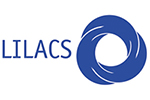ISSN Online: 2177-1235 | ISSN Print: 1983-5175
Showing of 1 until 6 from 6 result(s)
Search for : COVID-19; Surgery, plastic; Reconstructive surgical procedures; Health evaluation; Hospitals, university; Pandemics
Venous thromboemboembolism prevention protocol in plastic surgery: results in 2759 patients at the Ivo Pitanguy Institute
ABSTRACT
Introduction: Pulmonary embolism is the most predictable cause of death in hospitalized patients, even more in surgical patients. 200.000 new cases occur annually, with sudden onset and generally leading to death in the first 2 hours. Preventing is most effective than treating stablished disease. This study aims to show the importance and safety of the venous thromboembolism prevention protocol. Methods: We conducted a retrospective study in the period between May 2009 and May 2011 at The Ivo Pitanguy Institute, where 2759 patients underwent plastic surgery (aesthetic and reconstructive). All patients were assessed for predisposing and exposing risk factors for venous thromboembolism and the sum of those factors generated a score determining the prophylactic procedure to be adopted according to the protocol. Results: There were three cases of venous thromboembolism (0.1%): one case of pulmonary embolism and two cases of deep venous thrombosis. Chemoprophylaxis with heparin was administered in the three patients according to the venous thromboembolism prevention protocol. Our rates remained below those found in the literature, with a statistically significant difference in total cases (p < 0.0001). There were 34 cases of hematoma (1.2%): 55.9% in patients submitted to pharmacological prophylaxis with heparin and 44,1% in patients who used sequential compression devices only. The total rates of hematoma also remained below those found in the literature with a statistically significant difference (p < 0,001). Conclusion: The venous thromboembolism prevention protocol of the Ivo Pitanguy Institute proved to be important and safe, preventing the occurrence of venous thromboembolism cases with low rates of hematoma.
Keywords: Venous thrombosis; Heparin; Surgery, plastic; Disease prevention; Venous thromboembolism; Protocols.
RESUMO
INTRODUÇÃO: A embolia pulmonar é a causa de morte mais previsível em pacientes hospitalizados, sendo isso ainda mais prevalente em pacientes cirúrgicos. 200.000 novos casos ocorrem anualmente, com início súbito e geralmente levando à morte nas primeiras 2 horas. Prevenir é, portanto, mais efetivo que tratar a doença estabelecida. Esse estudo objetiva demonstrar a importância e segurança do protocolo de prevenção do tromboembolismo venoso. MÉTODOS: Conduzimos um estudo retrospectivo no período de maio de 2009 a maio de 2011, quando 2759 pacientes foram submetidos à cirurgia plástica no Instituto Ivo Pitanguy. Todos os pacientes foram submetidos ao protocolo de prevenção e avaliados quanto aos fatores de risco para tromboembolismo venoso. A soma desses fatores gerou um escore que determinou a conduta profilática a ser adotada. RESULTADOS: Houve três casos de tromboembolismo venoso (0,1%), sendo 1 de TEP e 2 de TVP. A quimioprofilaxia com enoxaparina administrada aos 3 pacientes de acordo com o protocolo de prevenção. Nossas taxas permaneceram abaixo das encontradas na literatura, com diferença estatisticamente significativa nos numero total de casos (p < 0,0001). Houve 34 casos de hematoma (1,2%), sendo 55,9% em pacientes submetidos à quimioprofilaxia e 44,1% em pacientes que usaram apenas o dispositivo de compressão pneumática intermitente apenas. As taxas totais de hematoma também permaneceram abaixo das encontradas na literatura, também com diferença estatisticamente significativa (p < 0,001). CONCLUSÃO: O protocolo de prevenção do tromboembolismo venoso do Instituto Ivo Pitanguy se provou seguro e importante na prevenção dos casos de TEV, com taxas de hematoma abaixo do descrito na literatura.
Palavras-chave: Venous thrombosis; Heparin; Surgery plastic; Disease prevention; Venous thromboembolism; Protocols.
Diagnosis, evolution and treatment of a patient with pyomyositis
ABSTRACT
Pyomyositis is a deep muscle infection of bacterial origin and subacute, which can evolve with multiple intramuscular abscesses. Despite being characterized as an affection of tropical zones, its incidence in temperate zones has been increasing due to immunosuppression factors, such as infection by the human immunodeficiency virus (HIV) and some types of immunosuppressive treatments. Even though it has been known for over a century, it is a rare and potentially serious condition that can lead to septic shock and death. This is a case report of a descriptive nature, which found the relevance of knowledge about this condition for an early diagnosis, enabling positive prognostic repercussions.
Keywords: Pyomyositis; Staphylococcal infections; COVID-19; Staphylococcus aureus Muscle, skeleton
RESUMO
A piomiosite é uma infecção muscular profunda, de origem bacteriana e caráter subagudo, que pode evoluir com abcessos intramusculares múltiplos. Apesar de ser caracterizada como uma afecção de zonas tropicais, sua incidência em zonas temperadas vem aumentando por fatores de imunossupressão, como a infecção pelo vírus da imunodeficiência humana (HIV) e alguns tipos de tratamentos imunossupressivos. Mesmo sendo conhecida há mais de um século, é uma condição rara e potencialmente grave, podendo levar ao choque séptico e óbito. Trata-se de um relato de caso de caráter descritivo, que constatou a relevância do conhecimento desta afecção para um diagnóstico precoce, possibilitando repercussões prognósticas positivas.
Palavras-chave: Piomiosite; Infecções estafilocócicas; COVID-19; Staphylococcus aureus; Músculo esquelético
ORIENTA COVID-19 app
ABSTRACT
Objective: Develop an application to guide health professionals during home care in coping with the COVID-19 pandemic.
Method: The structure of the application was developed in four stages: Analysis - an integrative literature review was carried out with the Health Sciences databases, such as MEDLINE, SciELO, and LILACS. Design - this step involved planning and producing didactic content, defining topics and writing subjects, selecting media, and designing the interface (layout). Development - definition of the navigation structure and planning of the configuration of environments. Implementation - construction of an environment for downloading the application on the Internet.
Results: The ORIENTA COVID-19 application has 40 screens and 130 images describing gowning, and undressing of PPE, including using a homemade mask, guidelines for care to prevent COVID-19, and social etiquette. After registration at the National Institute of Industrial Property, it will be available on the Google Play Store under ORIENTA COVID-19.
Conclusion: After an integrative review of the literature obtained from the main databases, the ORIENTA COVID-19 application was developed to support health professionals during home care related to COVID-19.
Keywords: COVID-19; SARS-CoV-2; Mobile applications; Personal protective equipment; Family health strategy; Nursing care; Tertiary healthcare
RESUMO
Objetivo: Desenvolver um aplicativo para orientar os profissionais de saúde durante o atendimento domiciliar, no enfrentamento da pandemia da COVID-19.
Método: A estrutura do aplicativo foi desenvolvida em quatro etapas: Análise - foi realizada uma revisão integrativa da literatura junto às bases de dados das Ciências da Saúde, como: MEDLINE, SciELO e LILACS. Design - esta etapa envolveu o planejamento e a produção do conteúdo didático, a definição dos tópicos e a redação dos assuntos, a seleção das mídias e o desenho da interface (layout). Desenvolvimento - definição da estrutura de navegação e o planejamento da configuração de ambientes. Implementação - construção de um ambiente para download da aplicação na Internet.
Resultados: O aplicativo ORIENTA COVID-19 tem 40 telas e 130 imagens descrevendo a paramentação, desparamentação dos EPIs incluindo a técnica do uso da máscara caseira, orientações dos cuidados para prevenir a COVID-19 e a etiqueta social. Após seu registro no Instituto Nacional da Propriedade Industrial, estará disponível no Google Play Store sob o nome ORIENTA COVID-19.
Conclusão: Após revisão integrativa da literatura obtida nas principais bases de dados, desenvolveu-se o aplicativo ORIENTA COVID-19, para apoio aos profissionais da saúde durante o atendimento domiciliar relacionado à COVID-19.
Palavras-chave: COVID-19; SARS-CoV-2; Aplicativos móveis; Equipamento de proteção individual; Estratégia saúde da família; Cuidados de enfermagem; Atenção terciária à saúde
Verdades e inverdades sobre a cirurgia íntima, 28 anos de experiência
ABSTRACT
Introduction: Because Intimate Surgery is being invaded by non-specialist colleagues, many
adventurers have started to perform Intimate Surgery, consequently the
complications are emerging in geometric progression all over the world.
Intimate Surgery is a detail surgery and it should be performed by a
qualified Plastic Surgeon who must have in-depth knowledge of basic
principles of plastic surgery and master the use of liposculpture with
syringe. The objective is to divulge surgical methods and results by
Medicine of Evidence with surgical corrections of external genital organs
dysformia, mainly, avoiding surgical aberrations. To do corrections in parts
of body that can to affect not only body, but the soul, too.
Method: To use liposuction by syringe, pubis lipofeeling, fusiform incisions
respecting the force's lines of the skin, choosing one technique for each
case. See the link: https://youtu.be/-AioaxHaj4E
Result: During 1989 until 2014 were registred 749 cases, being: 636 in female and 113
in male, the pathology more find in female was short labia hypertrophy:
51.53% and in male was penis hypotrophy: 7.07% and complication: 1.98%.
Conclusion: Intimate Surgery remove congenic and acquired dysmorphic and needs to be made
by qualified plastic surgeon, he needs to have great known to use skin flaps
and to dominate liposuction by syringe. The remotion of tissue or implants
is between security short limits.
RESUMO
Introdução: Em virtude da Cirurgia Plástica estar sendo invadida por colegas não
especialistas, muitos aventureiros passaram a realizar a cirurgia íntima,
consequentemente, as complicações estão surgindo em progressão geométrica em
todo o mundo. A cirurgia íntima é uma cirurgia de detalhes e que deve ser
realizada por cirurgiã/ão plástica/o qualificada/o que deve ter profundo
conhecimento dos princípios básicos de Cirurgia Plástica e dominar o uso de
lipoescultura com seringa. O primeiro implante de gordura autóloga em púbis
em uma paciente ocorreu em 1989, precisamente em Fortaleza/Ceará, Brasil,
realizado pela autora, com sucesso, motivo de se dar o start em cirurgia
íntima. O objetivo é divulgar métodos cirúrgicos e resultados pela Medicina
de Evidência com correções cirúrgicas de disformias dos órgãos genitais
externos, principalmente, evitando aberrações cirúrgicas.
Método: Lipoescultura com seringa, lipofilling pubiano, incisões
fusiformes respeitando as linhas de força da pele de cada região e escolha
de cada tática cirúrgica de acordo com cada caso clínico. Ver o link:
https://youtu.be/-AioaxHaj4E.
Resultados: Foram registrados 749 casos, no período de 1989 a 2014, sendo 85% no sexo
feminino e 15% no sexo masculino. A afecção de maior percentagem foi a
hipertrofia dos pequenos lábios: 51,53% na mulher; e no homem: hipotrofia de
pênis: 7,07%. Complicação: 1,98%.
Conclusão: A cirurgia íntima corrige disformias congênitas ou adquiridas, deve ser
realizada por cirurgiã/ão plástica/o qualificada/o que tenha amplo
conhecimento dos princípios básicos da Cirurgia Plástica, hábil no uso de
retalhos cutâneos e que domine a técnica de lipoescultura com seringa. A
retirada de tecidos ou implantes está situada entre limites estreitos de
segurança.
Palavras-chave: Genitália; Procedimentos cirúrgicos reconstrutivos; Genitália masculina; Genitália feminina; Hipertrofia; Genitalia; Reconstructive surgical procedures; Genitalia, Male; Genitalia, female; Hypertrophy
Impacts of the COVID-19 pandemic on surgical specialties at a university hospital in Bahia: a retrospective cross-sectional study
ABSTRACT
Introduction: Since the beginning of the COVID-19 pandemic, medical specialties have adapted their routine, postponing non-essential procedures, which resulted in a reduction in the number of surgical visits, directly impacting teaching hospitals. This work aims to evaluate the impact of the COVID-19 pandemic on the activities of the surgical specialties at the University Hospital Professor Edgard Santos (C-HUPES), located in Salvador-BA.
Method: Observational, cross-sectional, retrospective study, which compares the year 2020 to the year 2019, in which the impacts of the pandemic on the surgical activities (especially plastic surgery) of the hospital are analyzed through the total number of procedures, hospitalizations, and outpatient consultations of surgical specialties.
Results: A reduction of 45,45% of the total number of surgical procedures was observed, with 220 surgeries in 2019 and 120 surgeries in 2020. Reduction of 37.29% in hospitalizations, totaling 236 in 2019 and 148 in 2020. There was a decrease of 40.90% in outpatient consultations, with 2941 consultations performed in 2019 and 1738 consultations in 2020. It is noticed that the worst periods of reduction in 2020 were from March to June, in addition to a new drop in November and December.
Conclusion: The pandemic impacted the activities of the surgical specialties at C-HUPES due to the total reduction in the number of surgeries, consultations, and hospitalizations in 2020, impairing the care of plastic surgery patients in absolute numbers. It is inferred that the COVID-19 pandemic hampered the training of plastic surgery residents.
Keywords: COVID-19; Surgery, plastic; Reconstructive surgical procedures; Health evaluation; Hospitals, university; Pandemics
RESUMO
Introdução: Desde o início da pandemia de COVID-19, as especialidades médicas adaptaram
sua rotina, postergando procedimentos não essenciais, o que resultou em
redução no número de atendimentos cirúrgicos, impactando diretamente nos
hospitais de ensino. O objetivo desse trabalho é avaliar o impacto da
pandemia de COVID-19 nas atividades das especialidades cirúrgicas do
Hospital Universitário Professor Edgard Santos (C-HUPES), localizado em
Salvador-BA.
Método: Estudo observacional, transversal, retrospectivo, que compara o ano de 2020
ao ano de 2019, em que são analisados os impactos da pandemia nas atividades
cirúrgicas (especialmente na cirurgia plástica) do hospital, através do
número total de procedimentos, internações e de consultas ambulatoriais das
especialidades cirúrgicas.
Resultados: Redução de 45,45% no número total de procedimentos cirúrgicos foi observada,
havendo um total de 220 cirurgias em 2019 e 120 cirurgias em 2020. Redução
de 37,29% no número total de internamentos, total de 236 em 2019 e 148 em
2020. Observou-se diminuição de 40,90% nas consultas ambulatoriais,
realizadas 2941 consultas em 2019 e 1738 consultas em 2020. Percebe-se que
os piores períodos de redução em 2020 foram de março a junho, além de nova
queda em novembro e dezembro.
Conclusão: A pandemia impactou as atividades das especialidades cirúrgicas do C-HUPES,
devido à redução total da quantidade de cirurgias, consultas e internamentos
em 2020, prejudicando a assistência aos pacientes da cirurgia plástica em
números absolutos. Infere-se que a pandemia de COVID-19 prejudicou a
formação dos residentes de cirurgia plástica.
Palavras-chave: COVID-19; Cirurgia plástica; Procedimentos cirúrgicos reconstrutivos; Avaliação em saúde; Hospitais universitários; Pandemias
Burns and COVID-19, what is the impact of the pandemic? Epidemiological profile of a burn center between 2018-2022
ABSTRACT
Introduction: Although prevalent, the epidemiology of burns has gaps. At the same time, Covid-19 established a new scenario with new human behaviors, which could equally impact the characteristics and incidence of burns. The overall objective of the project was to describe the epidemiological profile of patients in a Burn Treatment Unit.
Methods: The study was a chart review from January 2018 to May 2022, including a sample of 1164 admissions from Hospital Padre Albino (Catanduva, São Paulo, Brazil). Statistical analysis was performed using Google Sheets and JAMOVI, and Mann-Whitney U-test was applied for comparison of time periods before and during the pandemic. Before data collection, the study was submitted and approved by the Research Ethics Committee of the institution (document number 5.616.556, CAAE: 62621822.50000.5430).
Results: The admissions presented a mean age of 31.38 years and 17.88% of body surface area burned, 452 women and 712 men, the mean age was 17 for women and 18.6 for men. The main agent was scalding. When it comes to period comparison, during the pandemic direct flaming had an 8% increase over the previous period (35%). The scalds still remained with high prevalence, however it presented a decrease of 2%, as well as the burns by dermabrasion, which had a decrease of 10%.
Conclusion: The findings of the studies have limits in terms of generalization, and new studies need to be developed. The changes observed in the period were not significant and without clinical relevance.
Keywords: COVID-19; Epidemiology, descriptive; Burns; Burn units; Brazil
RESUMO
Introdução: Embora prevalente, a epidemiologia das queimaduras possui lacunas.
Simultaneamente, a COVID-19 estabeleceu um cenário desafiador e com novos
comportamentos humanos, que poderiam impactar nas características e na
incidência de queimaduras. O objetivo geral do projeto foi descrever o
perfil epidemiológico dos pacientes de uma Unidade de Tratamento de
Queimados.
Método: O estudo foi uma revisão prontuários de janeiro de 2018 até maio de 2022,
incluindo uma amostra de 1164 admissões do Hospital Padre Albino
(Catanduva-SP). A análise estatística foi realizada através do
Google Sheets e JAMOVI, sendo aplicado o Teste U de
Mann-Whitney para comparação de períodos de tempo antes e durante a
pandemia. Antes da coleta de dados, o mesmo foi submetido e aprovado pelo
Conselho de Ética em Pesquisa da instituição (parecer número 5.616.556,
CAAE: 62621822.50000.5430).
Resultados: As admissões apresentaram idade média de 31,38 anos e 17,88% de Superfície
Corporal Queimada (SCQ), sendo 452 mulheres e 712 homens; a média de SCQ foi
de 17 para mulheres e 18,6 para homens. O principal agente causador foi a
escaldadura. No que tange à comparação por períodos, durante a pandemia a
chama direta teve um aumento de 8% em relação ao período anterior (35%). A
escaldadura ainda permaneceu com prevalência elevada, no entanto, apresentou
queda de 2%, assim como as queimaduras por dermoabrasão, com queda de
10%.
Conclusão: Os achados dos estudos possuem limites em termos de generalização e novos
estudos precisam ser desenvolvidos. As mudanças observadas no período não
foram significativas e sem relevância clínica.
Palavras-chave: COVID-19; Epidemiologia descritiva; Queimaduras; Unidades de queimados; Brasil
 All scientific articles published at www.rbcp.org.br are licensed under a Creative Commons license
All scientific articles published at www.rbcp.org.br are licensed under a Creative Commons license






